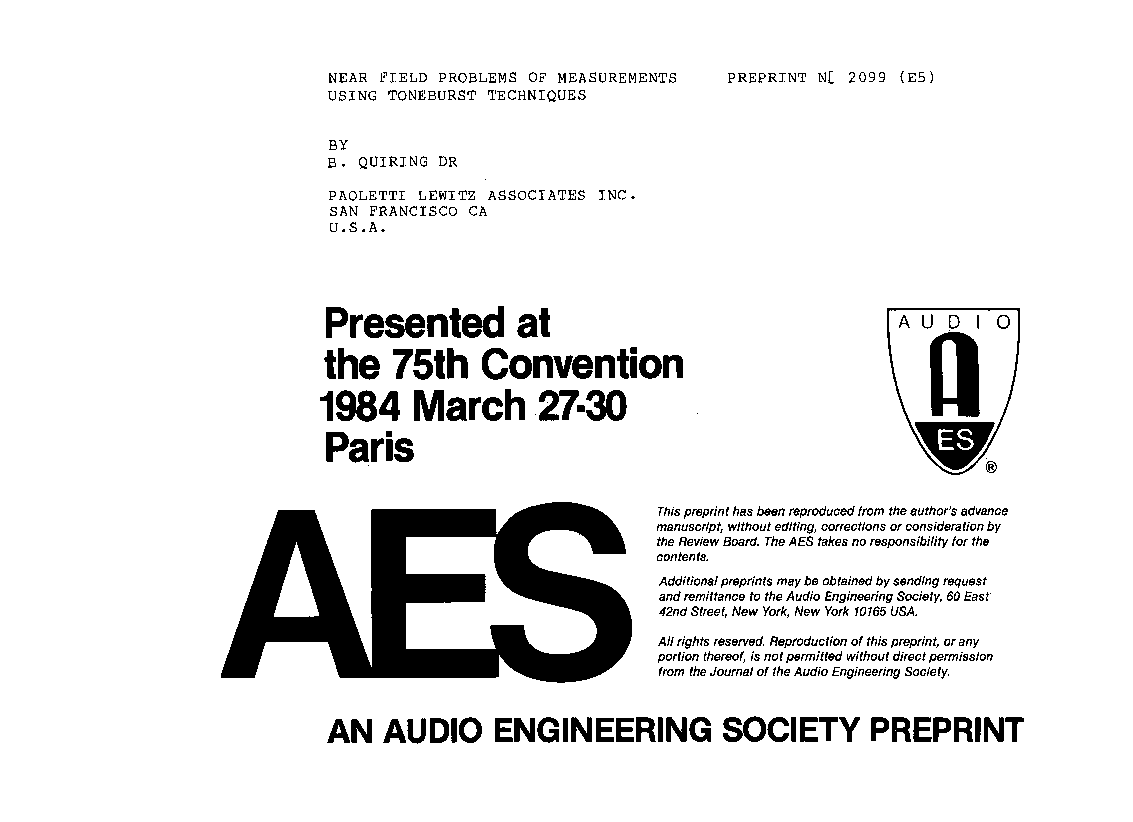Home / Publications / E-library page
You are currently logged in as an
Institutional Subscriber.
If you would like to logout,
please click on the button below.
Home / Publications / E-library page
Only AES members and Institutional Journal Subscribers can download
Toneburst techniques are employed in room acoustics to evaluate sound reflections from different room surfaces. The existence of single (detrimental) echoes can be recognized from the sound energy decay curve. Assuming the pulse width is small in comparison with the room dimensions, approximately even wave patterns can be assumed and phase shifts can be neglected. If the reflecting surface area is close to the sound source, nearfield wave patterns (e.g. spheroidal ones) must be considered. The measured sound levels can then be interpreted as the summation of the emitted intensities of the infinitesimal sound sources distributed on the reflecting surface. In that case, phase shifts must be considered. In this paper, formulas for the "area of influence" as a function of the pulse width and for the entire sound pressure as a function of the source and microphone positions are given.
Author (s): Quiring, B.
Affiliation:
PAOLETTI LEWITZ ASSOCIATES INC., SAN FRANCISCO, CA
(See document for exact affiliation information.)
AES Convention: 75
Paper Number:2099
Publication Date:
1984-03-06
Import into BibTeX
Session subject:
Measurements and Instrumentation
Permalink: https://aes2.org/publications/elibrary-page/?id=11665
(328KB)
Click to purchase paper as a non-member or login as an AES member. If your company or school subscribes to the E-Library then switch to the institutional version. If you are not an AES member Join the AES. If you need to check your member status, login to the Member Portal.

Quiring, B.; 1984; Near Field Problems of Measurements Using Toneburst Techniques [PDF]; PAOLETTI LEWITZ ASSOCIATES INC., SAN FRANCISCO, CA; Paper 2099; Available from: https://aes2.org/publications/elibrary-page/?id=11665
Quiring, B.; Near Field Problems of Measurements Using Toneburst Techniques [PDF]; PAOLETTI LEWITZ ASSOCIATES INC., SAN FRANCISCO, CA; Paper 2099; 1984 Available: https://aes2.org/publications/elibrary-page/?id=11665